Last week, just in time for the announcement (and release) of a new expansion for Cities: Skylines, I posted a video analysis on YouTube discussing what I perceive as weaknesses in the modular design philosophy behind Skylines' myriad expansion packs. The full video is available on YouTube (and embedded below), but I've also transcribed the text in blog form for those who may prefer reading over watching/listening.
The video is up on YouTube.
I want to start out by saying that I love Cities: Skylines. Skylines is -- without a doubt in my mind -- the single best city-builder since SimCity 4, which released in 2003 (over 15 years ago, as of the time of this recording). When I watched the first trailer for the game, in which the player apparently custom-builds freeway ramps and interchanges from scratch (at about 40 seconds into the trailer), I was sold on this game! After years of having to use boring, pre-fabricated stock on-ramps and interchanges, the little civil engineer withing me practically jizzed in his pants at the idea of being able to build my own highway ramps and interchanges! And there was no looking back.
Cities: Skylines gloriously succeeds where games like SimCity (2013) and Cities XL miserably failed. It picks up the mantle of the great SimCity games of yester-decade, and brings it into the 21st century with deep simulation based on agents, a sleek and modern UI, extensive customizability and moddability, and an attractive 3-D graphics engine. It's made all the more impressive by the fact that the game's developer, Colossal Order, is a small, independent studio that had something like nine people working for it when the game initially launched. And a company with all the manpower and resources of Electronic Arts only managed to produce a flop like SimCity 2013.
... [More]
cdac9d28-8482-4449-a673-ff10d4b7cc87|0|.0
Tags:Cities: Skylines, Cities: Skylines: After Dark, Cities: Skylines: Snowfall, Cities: Skylines: Natural Disasters, Cities: Skylines: Mass Transit, Cities: Skylines: Green Cities, Cities: Skylines: Parklife, Cities: Skylines: Industries, Cities: Skylines: Campus, Colossal Order, city planner, city simulation, strategy, Steam, Paradox Interactive, expansion, YouTube, Sid Meier's Civilization, Civilization V, Civilization V: Brave New World, Civilization VI, Civilization VI: Rise and Fall, Civilization VI: Gathering Storm
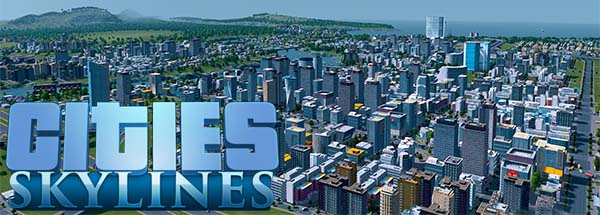
Some of the suggestions from my first wishlist have actually been implemented in Cities: Skylines. Naming roads, and adding directional traffic overlays were recently added in the Mass Transit expansion, and the previous Snowfall expansion incorporated some of my ideas for seasonal cycles (minus the part where the seasons actually cycle from one to another). There's still a lot of items from that wishlist that haven't been implemented. I also have come up with some new ideas for things I'd like to see in further expansions (or maybe a sequel?).
Taking the best ideas from its competitors
Even though Cities: Skylines is, by far, my favorite (and probably the objective best) city-building / city-simulation game of the past decade, there are still some features and ideas from the inferior games that I really like. In my first wishlist, I already talked about how much I liked the modular building mechanic of SimCity (2013).
I won't go into too much detail of why I liked that concept (even though the actual implementation was a little weak) because I invite you to read the original post. Suffice it to say, I liked the idea of certain pieces of city infrastructure (such as power plants, schools, universities, police stations, airports, government buildings, etc.) actually growing along with the city. Being able to upgrade an existing building to add additional functionality, additional capacity, or to specialize it in some way, was (in my opinion) a much more interesting and engaging process than simply plopping another copy of the same building every so often, or adjusting a global budget slider, simply to meet increasing demand.
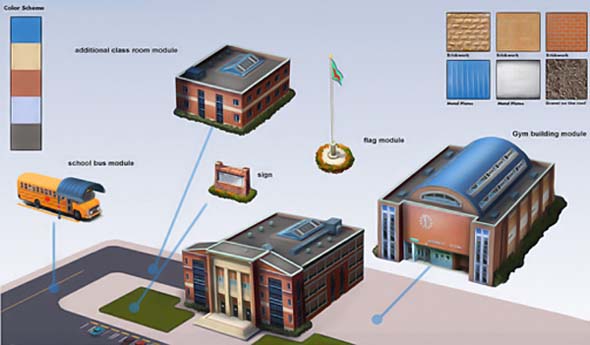
I still think SimCity had the right idea with its modular buildings.
In that first wishlist, I also briefly mentioned the Cities XL series. There isn't much in XL (or XXL) that is done as well (or better) than what is offered in either SimCity (2013) or Cities: Skylines, but I did neglect one idea that I think was probably the most clever, interesting, and fun part of the XL series of games: the ability to "fill" an area with "decoration". Put simply, Cities XL allows the player to fill any unoccupied area of the map (that is at least partially enclosed by roads) with one of several different types of decorative landscaping.
Landscaping options include a grassy park area with trees, an open-air "flea market" with kiosks and street vendors, various plazas / courtyards, and even a makeshift construction site. These decorations aren't functionally different (the flea market doesn't produce any commerce or jobs, for example), but each decorative area applies a very small environmental beautification effect that increases happiness and land value for adjacent homes or businesses.
Decorative areas in Cities XL allows you to fill-in irregular shapes with city-beautification projects.
From a more aesthetic standpoint, Cities XL's decorative areas allow the player to make very efficient use of space, to fill any empty dead space, and to create your own custom parks and plazas that conform to whatever shapes the outlining roads happen to be. Want a park in the middle of a large roundabout? Want a plaza space at the point of a 45-degree (or narrower) intersection? XL allows you to do such things without having to go into an asset-editor to make a custom ploppable.
Despite having muuuuuch better tools for creating curved and angled roads, Skylines doesn't really have any equivalent to these decorative features from XL that allow us to fill-in gaps left by our pretty, rounded or angled roads... [More]
61f9c85f-04f1-43df-ada3-cf727a4682d8|0|.0
Tags:Cities: Skylines, Cities: Skylines: After Dark, Cities: Skylines: Snowfall, Cities: Skylines: Natural Disasters, Cities: Skylines: Mass Transit, match day, Paradox Interactive, Colossal Order Ltd., PC, SimCity, CitiesXL, CitiesXXL, city simulation, park, decoration, parking, natural wonder, national park, beach, ski resort, tourism, leisure, history
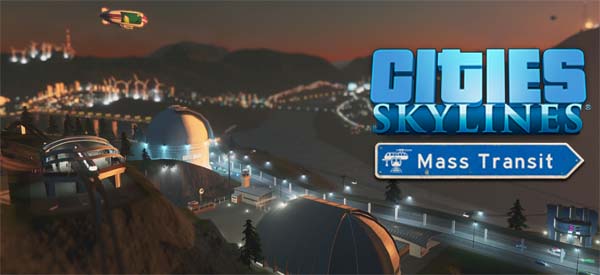
Cities: Skylines is easily my favorite city-builder of the past decade, but its expansions so far have been kind of lackluster. A big part of this is the fact that each expansion (so far) has had a pretty limited scope, meaning that I could really only recommend them if the expansion's particular theming was something that interested you.
While Mass Transit definitely has similarly tight theming, the effects of that theme are felt at a much broader level. Since Mass Transit seeks to specifically expand your transportation network (and fix some problems with creating transportation networks), and since every city of any size has a transportation network, this expansion has much more universal utility than any of the previous expansions.
Red light; green light
In fact, you'll likely start to see the impact of Mass Transit's new systems immediately upon loading up a city -- whether it's a new city or one of your established metropolises. If you're like me, then you'll immediately be thrilled to see that you can now name your streets. That's a cosmetic feature, but your budding young city will also soon encounter the new road and junction-management mechanics. You now have control over each and every intersection, and can assign STOP signs and traffic lights as you see fit.
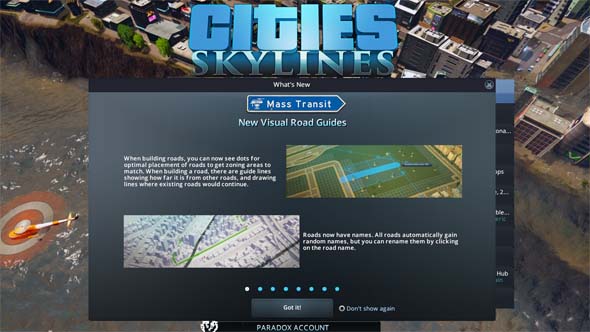
As soon as I booted up the expansion, it informed me that it included a feature from my wishlist
Creating a main thoroughfare and want to make sure that traffic flows steadily through it? Assign it as a "priority road", which puts two-way stops on each road that intersects the thoroughfare, allowing traffic on the thoroughfare to move unobstructed.
Have a three-way (T) intersection? You can even assign only the "trunk" of the T to have a STOP sign, forcing traffic from that road to have to yield to traffic in the crossing road. Unfortunately, you can't add a median with a through lane.
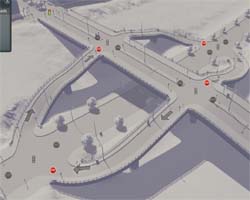
You can force traffic to yield to major streets.
Even the tiniest of cities can benefit tremendously from this simple enhancement, and large metropolises can definitely see an improvement in traffic throughput with efficient use of priority roads. However, priority roads are really the only useful functionality of this feature. Since the game doesn't model car accidents (not even at an abstract level), there's kind of no point in creating four-way stops (as opposed to simply leaving the intersection without any stop signs at all).
This feature also usually entail some frustrating micro-management, as having to manually assign traffic lights and STOP signs can be tedious if you get stuck having to do it for every new intersection. There's also consistent issues with named roads not maintaining their names when I extend them, which forces me to have to manually extend the label onto the new road segment.
The much bigger benefit, however, is that managing traffic is made simpler by the addition of some new route overlays. Not only can you see how congested an individual road is, but you can also see which direction is most congested and also where all the traffic is coming from. This is another item from my wishlist. You can use this feature to see the sources of traffic driving on the selected road, and you can also use it on individual businesses and homes to see where the people at the home or business are coming from and going to. You can even click on an individual citizen or vehicle and see the route that it's currently following.
[LEFT] Every intersection caused congestion prior to the expansion. Since Mass Transit,
you can use "priority roads" [MIDDLE] to speed up traffic in major thoroughfares [RIGHT]. [More]
267321ab-66b4-4de7-b6b1-766ccd9080eb|2|5.0
Tags:Cities: Skylines, Cities: Skylines: Mass Transit, Colossal Order Ltd., expansion, city simulation, traffic, intersection, stop sign, traffic light, monorail, ferry, airship, cable car
|

| 12 | | | | | | | 60 | | 11 | | | | | | | 55 | | 10 | | | | | | | 50 | | 09 | | | | | | | 45 | | 08 | | | | | | | 40 | | 07 | | | | | | | 35 | | 06 | | | | | | | 30 | | 05 | | | | | | | 25 | | 04 | | | | | | | 20 | | 03 | | | | | | | 15 | | 02 | | | | | | | 10 | | 01 | | | | | | | 05 |
|